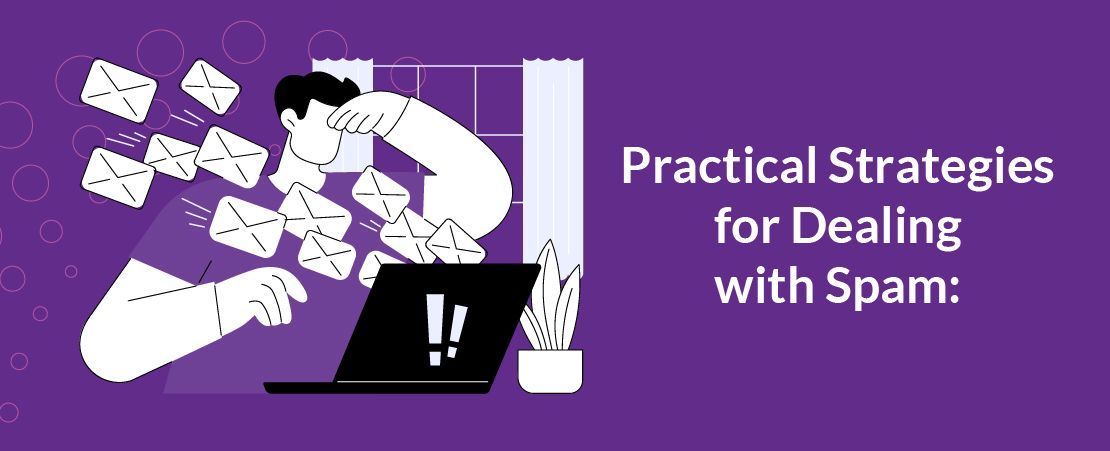Tackling the Spam Menace: How Small Businesses Can Deal with Unsolicited Emails and Messages
Spam—it's the bane of every Small Business Owner's existence. Whether it's clogging up your inbox with unsolicited emails or inundating your Website with fake comments and messages, dealing with spam can be a frustrating and time-consuming task.
That’s why we're here to explore practical strategies and best practices to help your Small Businesses effectively deal with spam and minimise its impact on your operations so you can get on with doing what you do best!

Understanding Spam:
If you’ve ever used technology in your life then you’ve probably been exposed to spam in some form or another, whether you’ve realised it or not.
Spam refers to
unsolicited or unwanted messages, typically sent in bulk, with the intent to promote products, services, or fraudulent schemes.
It can take many forms, including email spam, comment spam on Websites and blogs, Social Media spam, and robocalls.

Practical Strategies for Dealing with Spam:
If you’ve dealt with spam before (and let’s be honest most of us have) then you may not have known how to deal with it effectively. Many people resort to the only method they know, to just ignore it. While this isn’t a bad thing, you certainly shouldn’t engage with spam after all, it doesn’t necessarily deal with the issue.
Since you’ve got a Small Business to run you shouldn’t feel the need to just put up with spam, here are some practical tips for dealing with it so it doesn’t have to bother you ever again.
Use Spam Filters: Most email service providers offer built-in spam filters that
automatically detect and filter out spam emails based on various criteria, such as sender reputation, content analysis, and user feedback. Configure your email settings to enable spam filtering and periodically review the spam folder to ensure legitimate emails are not mistakenly flagged.
Implement CAPTCHA: CAPTCHA (Completely Automated Public Turing test to tell Computers and Humans Apart) is a challenge-response test
designed to determine whether the user is human or automated software (bots). Implement CAPTCHA on your Website's contact forms, comment sections, and other interactive elements to prevent automated spam submissions.
Enable Comment Moderation: If your Website or blog allows user comments,
enable comment moderation to review and approve comments before they are published. This helps prevent spammy or irrelevant comments from cluttering up your Website and maintains the integrity of your content.
Use Email Authentication Protocols: Implement email authentication protocols such as SPF (Sender Policy Framework), DKIM (DomainKeys Identified Mail), and DMARC (Domain-based Message Authentication, Reporting, and Conformance) to
verify the authenticity of incoming emails and prevent email spoofing and phishing attacks.
Educate Employees and Users: Educate your employees and Website users on how to recognise and report spam messages effectively.
Provide guidelines on identifying common spam indicators, such as suspicious sender addresses, generic greetings, misspellings, and requests for personal or financial information.
Avoid Clicking on Suspicious Links: Train employees to exercise caution when clicking on links or attachments in emails, especially those from unknown or untrusted senders. Encourage them to
hover over links to preview the URL and use reputable antivirus software to scan for malware before opening attachments.
Report and Block Spam: Most email providers and social media platforms offer options to
report and block spam messages or accounts. Encourage employees and users to report spam promptly to help prevent further spamming and protect others from falling victim to spam attacks.
Dealing with spam is an ongoing challenge for Small Businesses in today's digital landscape. However, by implementing practical strategies such as using spam filters, integrating CAPTCHA, enabling comment moderation, and educating employees and users, your Small Businesses can effectively combat spam and minimise its impact on your operations.
By staying vigilant, proactive, and informed, you can protect your Small Business’s online assets, maintain Customer trust, and focus on what matters most—growing your business!










